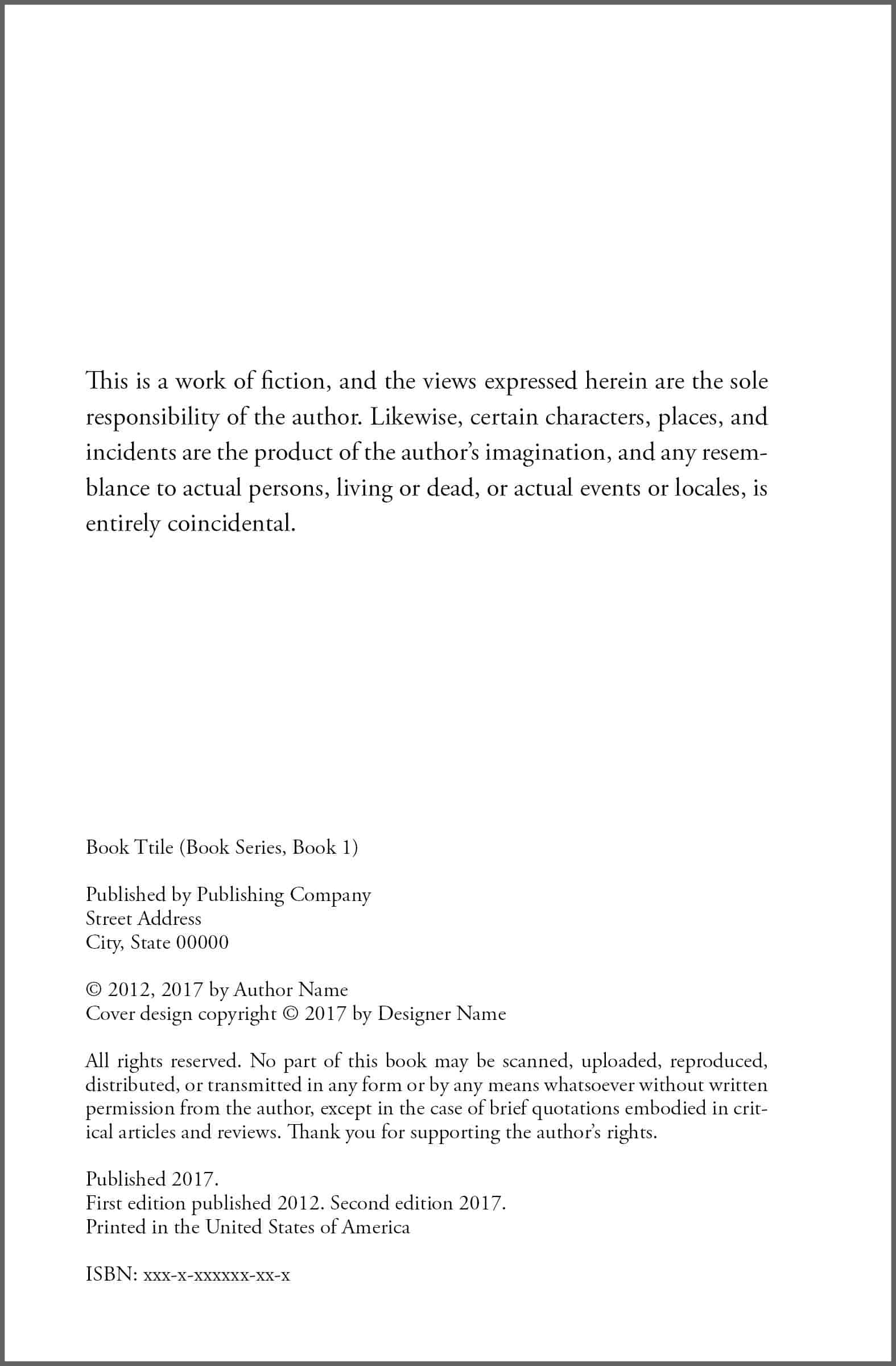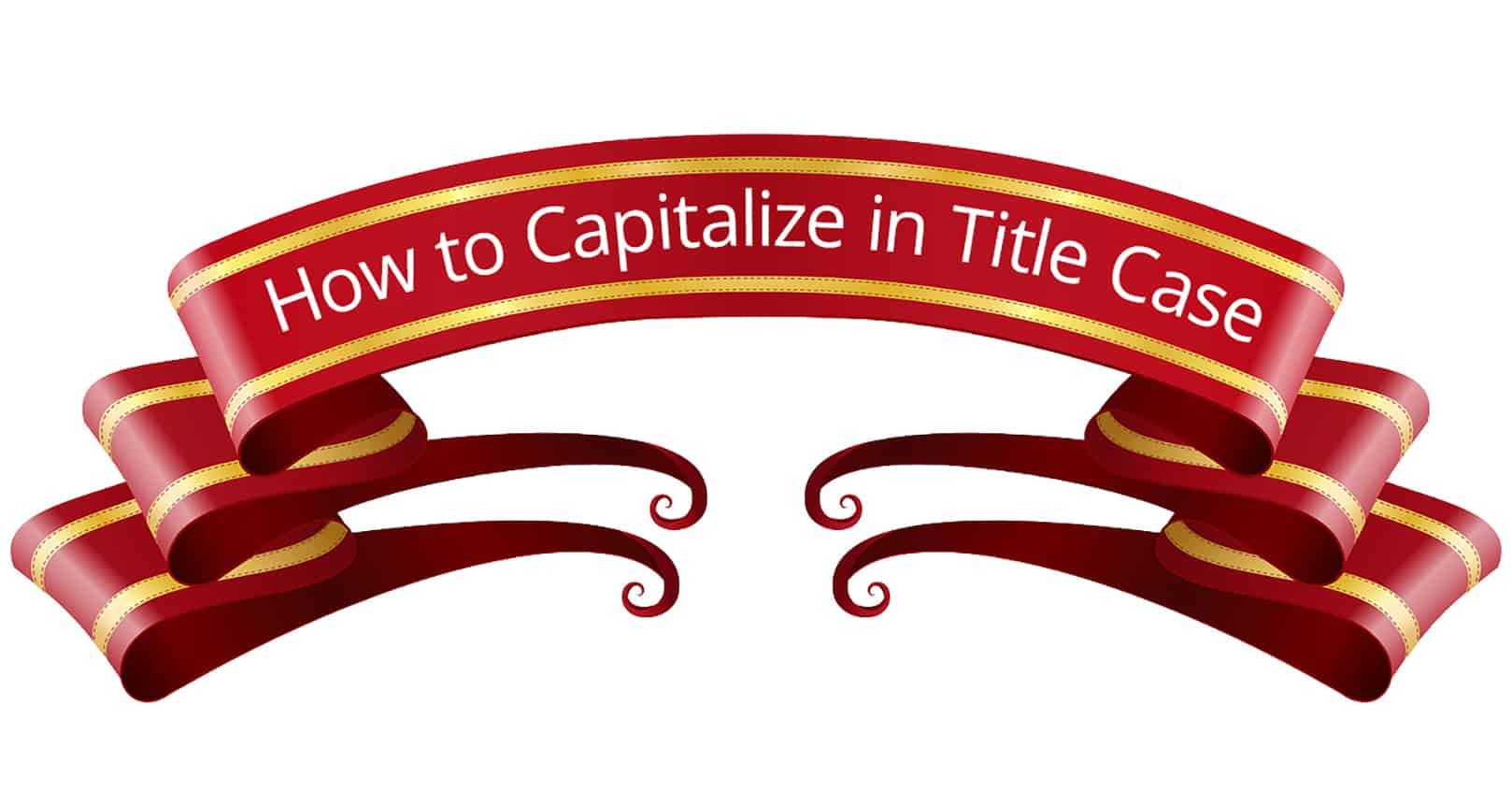
The copyright page. All books have them—but what should be included? Here is a list of elements to include when you need to create a copyright page.
Note that we’re using The Chicago Manual of Style to determine what elements a copyright page needs and in what order they should go (except where specifically mentioned otherwise). There are a lot of variations on order, but it doesn’t matter too much as long as all the elements are there and the copyright notice is near the top and the ISBN is near the bottom.
Location of the Copyright Page
The copyright page should appear directly after the title page and directly before the dedication. In a print book the copyright page should always be on the left, or verso, page.
Components to Use When You Create a Copyright Page
1. For fiction books, it’s a good idea to declare that resemblances to actual people and events in your book are coincidental. This is not an element included in Chicago, but as a fiction author (and especially if you are an Indie author), this paragraph is to protect you in case someone tries to sue you. It would go something like this:
This is a work of fiction, and the views expressed herein are the sole responsibility of the author. Likewise, certain characters, places, and incidents are the product of the author’s imagination, and any resemblance to actual persons, living or dead, or actual events or locales, is entirely coincidental.
2. Name of the book.
This element is not included in Chicago, but it is nice to include.
3. Publisher address.
This is where your publisher’s address goes, whether it is a physical address or a P.O. box. If you are self-publishing and are not publishing under your own publishing company, you do not need to include an address.
3. Copyright notice.
This is the copyright symbol ©, followed by the year your book is being published, and then the name of your publishing company—or your name if you are self-publishing and do not have your own publishing company. For example, “© 2017 John Doe” would be correct (do not use a period after the copyright notice). If you revise your book and republish an updated edition, you would include the original publication year as well as the publication year of the new edition:
© 2012, 2017 John Doe
4. Cover and interior design notice.
This element is not mentioned by Chicago, but if you are self-publishing and hire someone else to do your cover design or the interior print or ebook design, the designer may ask you to include a copyright notice on your book’s copyright page. Depending on where you obtain the image for the cover, you may also have to credit the photographer/artist. Here is an example of a copyright:
Front image copyright © Artist Name
Cover design copyright © 2017 Designer Name
If an artist is giving you all the rights to the photo/drawing (meaning that you can do whatever you want with it and they cannot resell it), then you would not include the © but instead would say this:
Front image by Artist Name
5. All rights reserved.
Now comes the familiar “All rights reserved” sentence. This is always followed by a period. Chicago doesn’t embellish the “all rights reserved” sentence, but you can add more to it if you want. Something like this is typical:
All rights reserved. No part of this book may be scanned, uploaded, reproduced, distributed, or transmitted in any form or by any means whatsoever without written permission from the author, except in the case of brief quotations embodied in critical articles and reviews. Purchase only authorized electronic editions and do not participate in or encourage electronic piracy of copyrighted materials. Thank you for supporting the author’s rights.
Including this paragraph doesn’t protect your rights any more than not including it would—all those rights are given to you by default—but it is a nice reminder to readers who may not realize that merely copying an ebook to a friend’s ereader is copyright infringement.
6. Published year.
This is the current year that you are publishing the book, whether or not it is the first time you are publishing:
Published 2017.
6. Publishing history.
This is only relevant if you have published your book as a new edition. You list the edition and the year it was published; each edition can be on its own line, or they can be separated by periods:
First edition published 2012. Second edition 2017.
Or
First edition published 2012
Second edition 2017
Books with a long publishing history can list just the first edition and the last edition.
7. Country of printing.
This one is pretty easy; just put in the country where your book is being printed. If you’re doing self-publishing through Amazon’s KDP, state that the country it is being printed in is the United States of America, because that is where their main printing facilities are:
Printed in the United States of America
According to Chicago, if the country your book is being printed in is different from the country of publication, the cover must also have this “Printed in” statement.
8. ISBN
Put in the print ISBN that you get from KDP, Bowker, or any other legitimate ISBN generator:
ISBN: xxx-x-xxxxxx-xx-x
Here is a copyright page example—feel free to refer to it when you create a copyright page:

That’s it! We’ve included only the elements of a copyright page that you would need for a fiction novel. If you’re writing nonfiction, I strongly suggest you check out The Chicago Manual of Style for more details on things like impression number and acknowledgements of grants.
Do you have any questions about how to create a copyright page? Let us know in the comments below!















I have a client who wants to purchase. 1000 e-Book copies of my Book.
They will pay upfront for the e-Books but wants to call off the e-Books as and when she requires to send them to her students. Is there a system where we can register her order of 1000 e-Books and as she calls off say 100 e-Books that the system deducts the 100 e-Books, leaving the balance of 900 e-books. Can i create an E-Book that can do that for me.
Thanks for the article.
If self-publishing under your own imprint, why do you say a street address or P.O. box is required? Is this a legal requirement? Couldn’t you use a website instead for contact information?
This isn’t a legal requirement as far as we know, but rather custom. Certainly, if you are self-publishing, you don’t want to put your home address. If you do not have a post office box, feel free to use a web address.